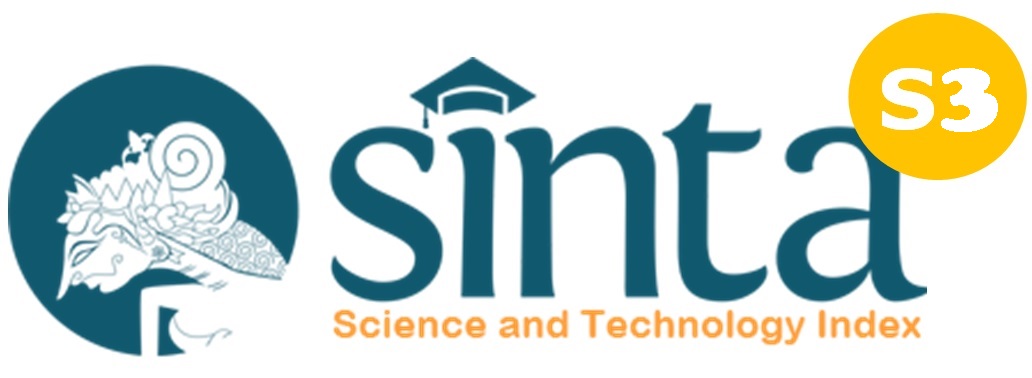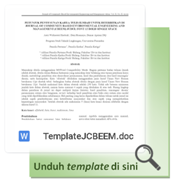Potential Utilization of Defective Fruit Juice Products for Black Soldier Fly Cultivation to Reduce Waste Generation in the Beverage Industry
DOI:
https://doi.org/10.23969/jcbeem.v8i2.18019Keywords:
Maggot, Defective Product Waste, Waste Characteristics, Waste ReductionAbstract
The waste of fruit juice and tea defective products has organic content that conventionally has the potential to be utilized as a medium or place for maggot growth, but until now it has not been equipped with supporting scientific studies. Therefore, the objectives of the study are: 1) Assessing the characteristics of fruit juice and tea product waste, 2) Assessing the effectiveness of maggot in reducing fruit juice and tea product waste. This research is experimental in nature using variations in the composition of fruit juice and tea product waste as a source of nutrition for maggot which is carried out for 12 days. This variation uses the Complete Randomized Design method with 3 (three) treatments, namely variations in the composition of 60% tea + 40% fruit juice waste (S1), 50% tea + 50% fruit juice waste (S2), and 40% tea + 60% fruit juice waste (S3) in duplo. In addition, this study was completed with a control treatment. The results showed that the characteristics of fruit juice and tea waste containing protein (3.78-4.59%), fat (0.90-1.31%), carbohydrates (28.15-29.15%), crude fiber (2.42-3.12%) can be used as maggot cultivation media. The highest protein and crude fiber contents were found in the S3 composition waste at 4.59% and 3.12%. Maggot cultivation results that showed the highest fat and carbohydrate content were found in S1 composition waste at 1.31% and 29.15%. The recommended composition variation is S1 composition with the highest substrate consumption value and waste reduction index of 57.47% and 20.06%.
Downloads
References
Amran, M., Nuraini, N., & Mirzah, M. 2021. Effect of fermentation culture media with different microbes on black soldier fly (Hermetia illucens) maggot production. Journal of Animal Husbandry, 18(1), 41-50. http://dx.doi.org/10.24014/jupet.v18i1.11253.
Cicilia, A. P., & Susila, N. (2018). Potensi Ampas Tahu Terhadap Produksi Maggot (Hermetia illucens) sebagai Sumber Protein Pakan Ikan: Potential of Tofu Dregs on the Production of Maggot (Hermetia illucens) as a Source of Protein of Fish Feed. Anterior Jurnal, 18(1), 40–47. https://doi.org/10.33084/anterior.v18i1.407
Dewi, M,K., Widiatningrum, T., Subekti, N., Setiati, N. (2023). Effectiveness of Type and Frequency of Organic Waste Feeding on Growth and Bioconversion Quality of BSF Maggot (Hermetia illucens). Life Science, 12(1), 1-9. https://doi.org/10.15294/lifesci.v12i1.64137.
Fiberty, E. 2002. The Effect of Several Levels of Tea Pulp Use in Pelleted Rations on the Performance of Weaned Crossbred Rabbits. Thesis. Department. Animal Nutrition and Food Science .Faculty of Animal Husbandry. Bogor Agricultural University.
Gabler, F. (2014). Using black soldier fly for waste recycling and effective Salmonella spp. reduction. Swedish University of Agricultural Sciences, October, 1–26.
Hamali, S., Kurniawan, S., Hidayat, C., Fitriani, A. N. A., Osmond, G., & Evanti, N. (2018). A Six Sigma Application for the Reduction of Floor Covering Defects. Pertanika Journal of Social Sciences & Humanities, 26, p.71
Hariani, N.M.M., H.A.T Tellu, L.M.P Alibasyah. (2013). Pengaruh Ampas Teh Tjap Daun Terhadap Produksi Tanaman Kacang Tanah (Arachis hypogaea L.) dan Pengembangannya sebagai Media Pembelajaran. e-Jipbiol, 1, 10-18.
Masir, U., Fausiah, A., & Sagita, S. 2020. Production of black soldier fly (BSF) maggot (Hermetia illucens) on tofu pulp and chicken feces media. AGROVITAL: Journal of Agricultural Sciences, 5(2), 87-90. http://dx.doi.org/10.35329/agrovital.v5i2.1746.
Rofi, D. Y., Auvaria, S. W., Nengse, S., Oktorina, S., & Yusrianti, Y. (2021). Modifikasi Pakan Larva Black Soldier Fly (Hermetia illucens) as an Effort to Accelerate Fruit and Vegetable Waste Reduction. Journal of Environmental Technology, 22(1), 130–137. https://doi.org/10.29122/jtl.v22i1.4297.
Santy, C. R. (2019). The Effect of Tapioca Flour Addition on Soft Ice Cream Low in Fat of Pandan Activated Charcoal (Pandanus amaryllifolius (Roxb). Thesis. Unika Soegijapranata.
Sipayung, P.Y.E. (2015). Pemanfaatan Larva Black Soldier Fly (Hermetia Illucens) Sebagai Salah Satu Teknologi Reduksi Sampah Di Daerah Perkotaan. Undergraduate Thesis. Institut Teknologi Sepuluh Nopember.
Sundari, D., B. Nuratmi, M.W. Winarno. (2009). Toksisitas Akut (Ld50) Dan Uji Gelagat Ekstrak Daun Teh Hijau (Camellia Sinensis (Linn.) Kunze) Pada Mencit. J: Health Research and Development Media, 19(4), 198-203.
Tugiyanti, E. E. Susanti dan I.H. Sulistyawan. (2017). Utilization of Functional Properties of Fermented Tea Dregs to Produce Healthy Performance and Quality of Local Duck Products. Research Report. RISUN BLU UNSOED. LPPM Unsoed. Purwokerto.
Wardhana, A. H. (2017). Black Soldier Fly (Hermetia Illucens) As An Alternative Protein Source For Animal Feed. Indonesian Bulletin Of Animal And Veterinary Sciences, 26(2), 069. Https://Doi.Org/10.14334/Wartazoa.V26i2.1327














